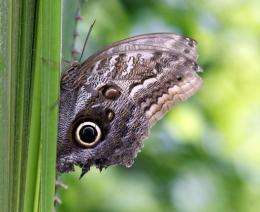Habitat loss wiping out Europe's butterflies

The destruction of natural habitats in Europe is wiping out butterfly, beetle and dragonfly species across the region, the updated European "Red List" of endangered species showed Tuesday.
"When a Red List like this raises the alarm, the implications for our own future are clear. This is a worrying decline," said EU Environment Commissioner Janez Potocnik.
Scientists examining Europe's 435 butterfly species found that the populations of one in three species are falling and nine percent are already threatened with extinction.
"Most butterflies at risk are confined to southern Europe," said Annabelle Cuttelod, coordinator of the European Red List at the International Union for the Conservation of Nature (IUCN).
"Their main threat is habitat loss, most often caused by changes in agricultural practices, either through intensification or abandonment, or to climate change, forest fires and the expansion of tourism."
Likewise, logging has led to a decline in the populations of some beetles species that are depend on decaying wood. Known as saproxylic beetles, they play an important role in ecosystems by recycling nutrients.
Some 11 percent or 46 species of them are at risk of being lost from the region, while seven percent are threatened with extinction worldwide.
"The main long-term threats to saproxylic beetles are habitat loss due to logging and the decline in the number of mature trees," said the IUCN.
For dragonflies, it is the depletion of freshwater resources that is causing these species to drop in numbers.
Five percent of dragonfly species are threatened with global extinction, while some 11 percent are considered to be near threatened within Europe.
"Increasingly hot and dry summers combined with intensified water extraction for drinking and irrigation are causing the dragonflies' wetland habitats to dry up," said the IUCN.
The list including some 6,000 European species is part of the IUCN's overall Red List, which is the most respected inventory of biodiversity covering more than 47,000 of the world's species.
(c) 2010 AFP













